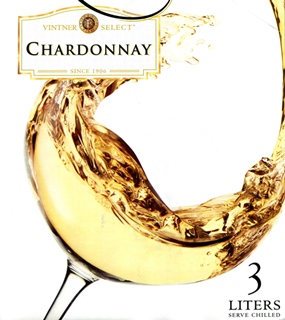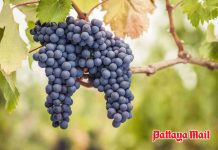So what are your views about wine in boxes? Wine lovers tend to be a bit sniffy about them and at one time, they had every reason to be, for most boxed wines were nearly always cheap plonk. Even today, some boxed wines tend to be fairly ordinary but some of them are much better than others. Never has the Latin warning “Caveat emptor” been so appropriate. I came across an Italian one a few months ago which was horridly acidic and virtually undrinkable. Even my dogs turned it down. Strangely enough, some of the French boxed wines in the local shops are pretty dodgy too.
If you want to play safe, I’d suggest that you stick with the boxed wines from Australia, Chile, South Africa and California. Stay with them and you probably won’t go far wrong. Some Californian wine companies have always aimed at the mass market and produced what Americans call “jug wines” because they were usually sold in three or five litre glass “jugs”. Most companies that used to package their cheapest wines in this way have switched to bag-in-box (BIB) packaging. This then enables them to make a song and dance about their environmentally-friendly products.

BIB wines are not only a good way to save money, but they also allow the wine to be kept for up to six weeks after opening. They avoid problems that occur with faulty corks and they’re ideal if you just want a couple of glasses each evening with dinner.
Franzia Chardonnay (white), Australia (Bt. 750 for 3 litres @ Best)
You may be wondering why it says “Australia” on the box, when Franzia is a well known company in California. I suppose we have to assume that the Australian wine is shipped in bulk to California where it is bagged and boxed and then trundled half way around the world again to Thailand.
Teresa Franzia planted her first vineyard along the road to Yosemite in 1906 and today the company announces itself as the makers of “the world’s most popular wine.
This one is a very pale straw colour with a faint floral aroma and hints of ripe pineapple and melon. As usual, you’ll need to give it a bit of time for the aroma to develop. This is probably even more important in the case of BIB wines because they are absolutely airtight, or supposed to be. Twenty minutes in the decanter will make all the difference but be sure to drink it very cold. As you’d expect this is an easy-drinker; a very unassuming wine that you can just knock back without giving it too much thought. It would make an ideal party wine or something to swig with snack food. For a basic wine, it is actually very well made, with a pleasant balance and an exceptionally long dry finish.
Almaden Cabernet Sauvignon (red), California (Bt. 790 for 3 litres @ Best)
In 1852, Etienne Theé planted California’s first vineyards with vines from his home in France, naming it Almaden Vineyards after a local mine in the Los Gatos area. California’s winemaking began there, and since then Almaden has become one of the leading winemakers in the country.
Today the company specialises in BIB wines and this ruby-red Cabernet turns out to have a pleasant aroma of red fruit and a hint of herbs. But of course, this is not a wine for swirling, sniffing and pontificating about. It’s just a simple, everyday wine intended for pleasurable drinking. It’s quite dry with a very soft mouth-feel; light to medium bodied and a slight edge to the taste that gives it a touch of liveliness. It’s an undemanding easy-drinker that would make an ideal partner for snack food or pizza and at just over 12% alcohol would make an ideal party wine, especially at this price. The three litre box works out at the equivalent of a mere Bt. 198 a bottle. Incidentally, the wine evidently scored 93 points (presumably out of 100) at the 2009 California State Fair.
And just in case you’re wondering, Almaden is pronounced in the same way as the girl’s name, with the accent on the first syllable and with “den” tacked on to the end. But I don’t suppose many girls get named Alma these days, any more than boys get named Eustace or Albert.




